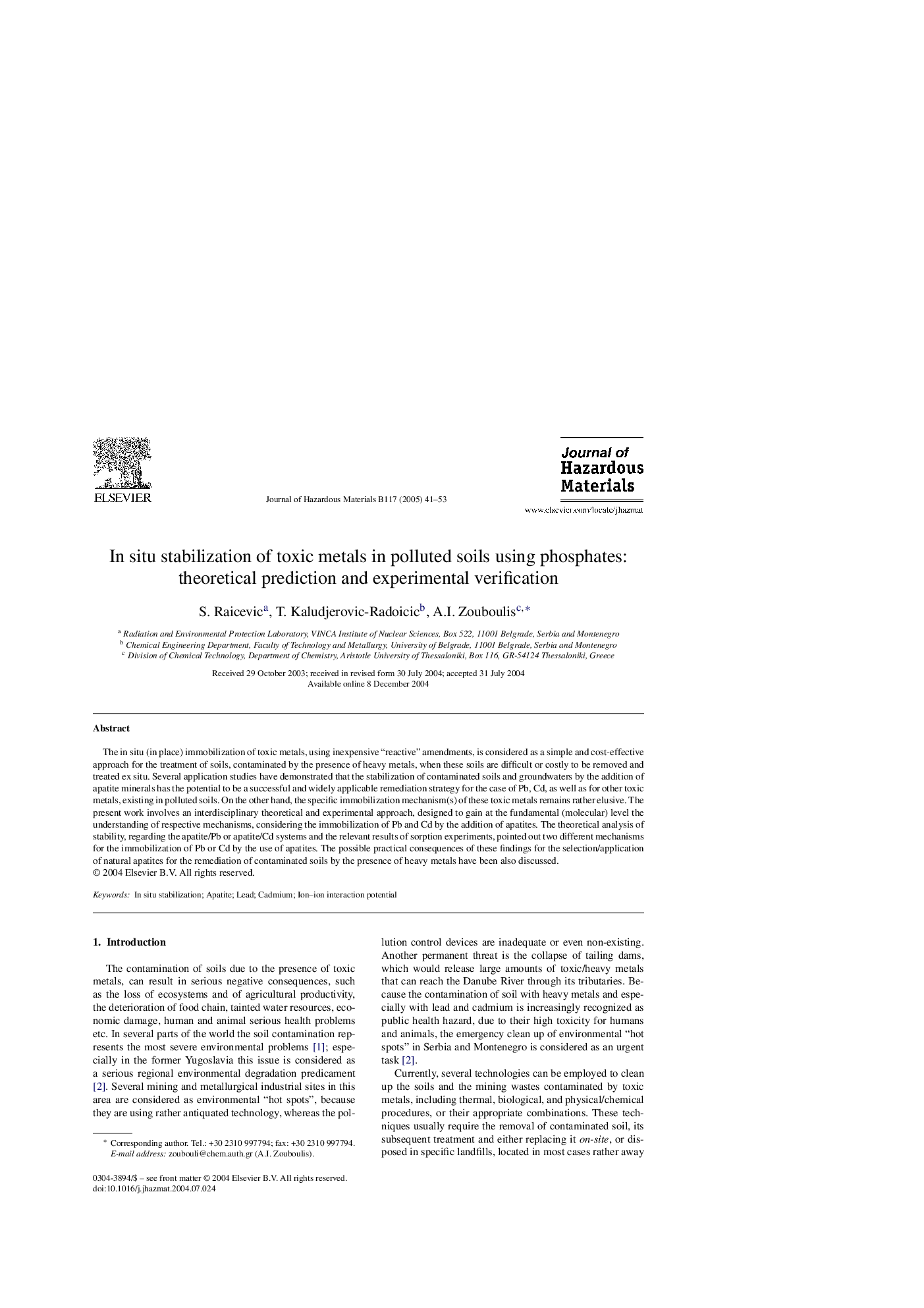| Article ID | Journal | Published Year | Pages | File Type |
|---|---|---|---|---|
| 10372799 | Journal of Hazardous Materials | 2005 | 13 Pages |
Abstract
The in situ (in place) immobilization of toxic metals, using inexpensive “reactive” amendments, is considered as a simple and cost-effective approach for the treatment of soils, contaminated by the presence of heavy metals, when these soils are difficult or costly to be removed and treated ex situ. Several application studies have demonstrated that the stabilization of contaminated soils and groundwaters by the addition of apatite minerals has the potential to be a successful and widely applicable remediation strategy for the case of Pb, Cd, as well as for other toxic metals, existing in polluted soils. On the other hand, the specific immobilization mechanism(s) of these toxic metals remains rather elusive. The present work involves an interdisciplinary theoretical and experimental approach, designed to gain at the fundamental (molecular) level the understanding of respective mechanisms, considering the immobilization of Pb and Cd by the addition of apatites. The theoretical analysis of stability, regarding the apatite/Pb or apatite/Cd systems and the relevant results of sorption experiments, pointed out two different mechanisms for the immobilization of Pb or Cd by the use of apatites. The possible practical consequences of these findings for the selection/application of natural apatites for the remediation of contaminated soils by the presence of heavy metals have been also discussed.
Related Topics
Physical Sciences and Engineering
Chemical Engineering
Chemical Health and Safety
Authors
S. Raicevic, T. Kaludjerovic-Radoicic, A.I. Zouboulis,
